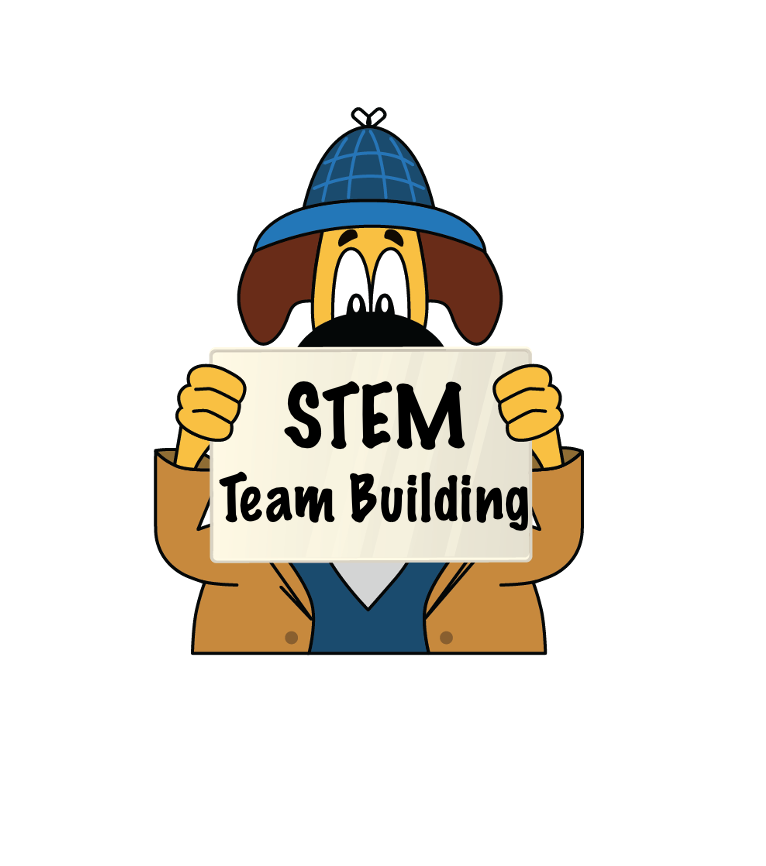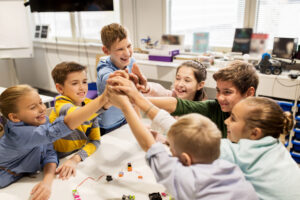
Team building
One of the over-arching goals of any STEM program is for students to improve communication and problem-solving skills, as well as to hone their ability to work with other students. In short – how to be part of a team.
By the time students are in 3rd or 4th grade, we begin to expect them to be able to work cooperatively with their peers in small groups . We need to keep in mind, however, that just like any other skill, students need to be taught how to share their ideas and listen to others and resolve conflicting visions of the solution to a problem - all while working toward the solution to the problem. Not an easy task for most people of any age.
As a STEM teacher, it is your job to ensure that your students have the opportunities to build their teamwork skills needed to successfully complete a challenge with others. This is a tall order and best to be thought of as a year-long process.

Time for Explicit Teaching
The first several days of a new school year is typically spent in “getting to know you”, and general team building activities. There are discussions about acceptable respectful discussion behaviors that are typically listed and posted in the classroom. These discussions are the perfect springboard to segue into working as a team to solve challenges.
Trying to solve a problem within a group can offer quite a challenge to young students. Communication misunderstandings and competing ideas of how to solve the problem can cause tension among the members. Therefore, we discuss and model language to use within the group to enable the students to:
- Ask for more information or clarify a point – “I’m not sure I understood what you said about (fill in item). Would you clarify?”
- Present another, different solution - “Have you considered (insert a point that was overlooked)?”
- Disagree with something said - “Although I understand what you are suggesting, I don’t agree with (name a specific part of the plan) because….
- Add information – “I’d like to piggyback onto what Sarah said…..”
Team Building Lessons
Lessons whose purpose is to specifically build teamwork are fun and can be a great way to help the students build trust and camaraderie before tackling a tough problem.
A good team building lesson should:
- Be written so that everyone begins from a common ground. There should be no special skills needed or information that needs to be known to be successful.
- Should have a definite goal, or two. For instance, building communication, practicing ways to problem solve or encourage negotiation.
- Have a reflection period for the students.
We believe that STEM lessons are great team building lessons since they are typically fun and encourage communication.
Our Back to School Team Building lesson packet is perfect for the first week of school. Comprised of 5 quick energizers in a bundle, its perfect to use as a fun way to discuss and build those team work skills needed all year.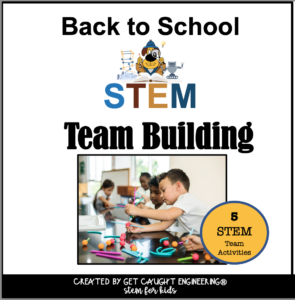
Other Tools for Success
We’ve found that often young students have difficulty jumping into a STEM challenge without some very explicit procedures to follow, in spite of having language to use. They are usually excited to begin and anxious for their ideas to be used for the solution. Therefore, we often utilize the following at the beginning of the year:
- Have each student come up with a solution to the problem individually, complete with drawings and explanations before there is group discussion.
- Each student then shares their idea. Students use the language already discussed and posted in the classroom to ask for clarification, etc.
- Encourage your students to incorporate as many of the ideas presented into the final solution.
 Begin with simple activities with simple solution. The team members can focus more on learning how to be a good team member rather than the solution. They also get rewarded by a successful solution.
Begin with simple activities with simple solution. The team members can focus more on learning how to be a good team member rather than the solution. They also get rewarded by a successful solution. 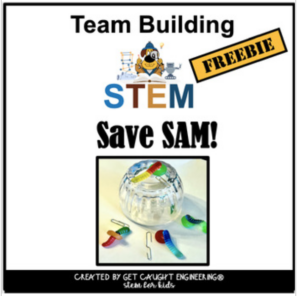
Save Sam with STEM and Teamwork
At the end of every challenge, have your students reflect on what went well within their group and what didn’t go well. Be sure to ask for what they feel needs to be changed. In our classrooms, we typically heard that they needed to listen more to each other and they needed to plan more. Remind them of this at the beginning of the next challenge.A Word About Creating Teams
When grouping students into teams, you need to carefully consider what you know about each of your students. This is definitely a challenge at the beginning of the school year; therefore, keep challenges simple at that time. Teams should be composed of students of differing strengths and abilities. Once teams begin to work, be sure to carefully observe the dynamic of the team:
- Has one student taken over the activity?
- Are there arguments rather than discussions?
- Is any student totally disengaged?
Teams should be changed throughout the school year and the information that you learn from observing your students will help you avoid creating a group that cannot be successful.
In Conclusion
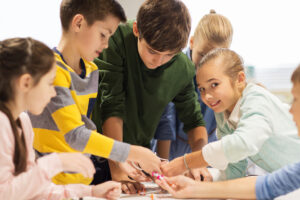
In short, it takes time to teach your students how to be a member of a team. The time you invest in the beginning of the year – and throughout the rest of the year will be well worth it.



